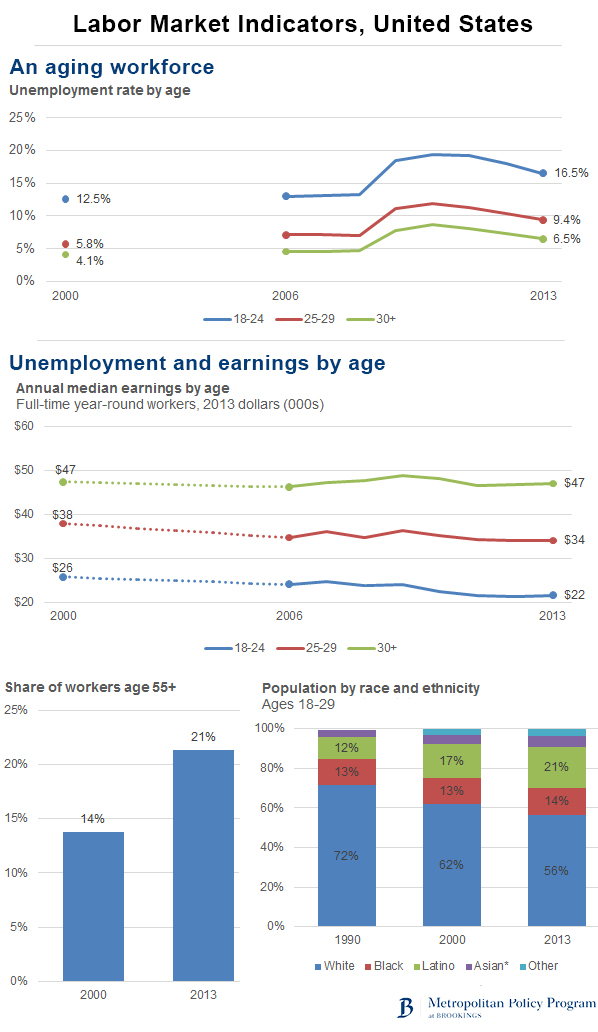Younger workers consistently experience higher unemployment and less job stability than older workers. Yet the dramatic deterioration in employment outcomes among younger workers during and since the Great Recession creates new urgency about developing more effective bridges into full-time employment for young people, especially those with less than a bachelor’s degree.
Improving the employment status of young adults and helping employers meet workforce needs are complementary goals. Designing strategies to achieve them requires insight into the supply and demand sides of the labor market: both the characteristics of young people and their typical routes into employment as well as the demand for entry-level workers and the market forces that shape employer decisions about hiring and investing in skill development. A quantitative and qualitative inquiry focused on the metropolitan areas of Chicago, Ill. and Louisville, Ky. led to the following insights:
An increasingly diverse younger generation will make up a growing share of the workforce. Improving the educational and employment outcomes of blacks and Hispanics is critical to maintaining a skilled and competitive labor force.
While younger workers concentrate in low-wage service industries, some industries hold more promise for better career opportunities for young adults with less than a bachelor’s degree. About one in four young adult workers is employed in one of these promising sectors, which include manufacturing, transportation, logistics, and health care.
While many firms appreciate the flexibility, energy, and tech-savviness of younger workers, they identify academic and soft skills, dependability, and ability to fit into the workplace culture as both fundamental requirements and pervasive weaknesses among younger workers.
Among the employers interviewed, some expressed dissatisfaction with their strategies for recruiting, assessing, and hiring entry-level workers for positions they deemed critical to their success. When they determined that their existing approaches to human resources threatened their competitiveness, they took concrete steps to better identify, train, and support workers in attaining the necessary skills and competencies.
To improve outcomes both for young adults and businesses, a broad group of stakeholders—employers, educational institutions, government, and philanthropy—need to support and make changes on both the supply and demand sides of the labor market. Employers need to identify more clearly the skills necessary to execute their business plans and improve their strategies to recruit, assess, and train for those skills; stakeholders need to support and participate in workforce intermediaries or employer partnerships that meet regional labor market needs; educators and employers need to strengthen their information flows and increase their use of industry-recognized competency-based credentials; and educators and employers need to work together to expand work-based learning opportunities.





